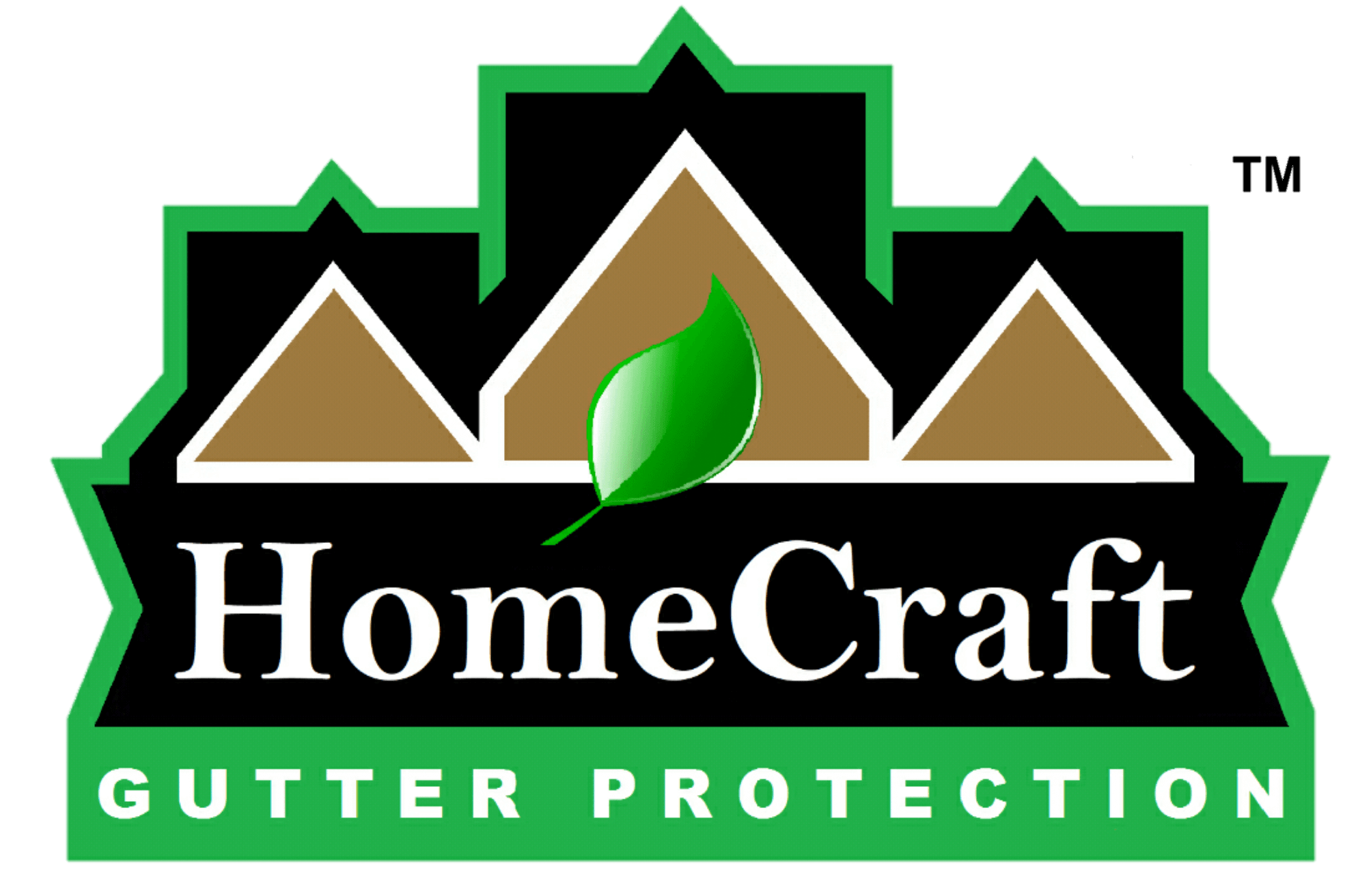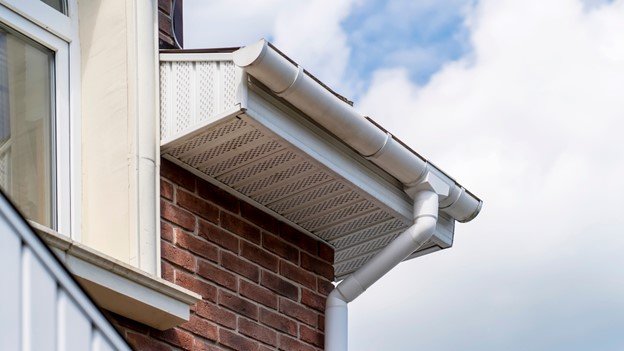Choosing the proper gutters for your home is a critical decision affecting its appearance, functionality, and durability. Gutters are essential to your home’s drainage system, protecting it from water damage caused by heavy rainfall, snow, and ice. Two popular gutter styles are, each with unique features and benefits. K-style gutters are more functional, durable, and affordable, while half-round gutters are more attractive, efficient, and low-maintenance.
The right gutter style for your home depends on several factors, including your local climate, desired aesthetic appeal, roof size and shape, and roof pitch and gutter seam. In this guide, we’ll help you understand the features and benefits of each gutter style to help you choose the best option for your home.
Introduction to Gutter Styles: What You Need to Know
Rain gutters may seem like a straightforward component of your home, but they protect it from water damage. Gutters come in various styles and materials, making it difficult for the average homeowner to know what type is best for their home. In this guide, we’ll discuss the different types of gutters and provide you with everything you need about gutter installation.
Before we dive into the different gutter styles, it’s essential to understand why houses need gutters. Gutters help prevent common, costly issues such as mold and mildew due to moisture penetration, siding and foundation damage, and fascia-board rot. They also keep your basement from leaking or flooding and will protect your landscaping from trenching and erosion.
The most popular gutter styles are K-style and half-round gutters, but there are other types of gutters to know about, such as custom fascia and box-style gutters. Half-round gutters are semi-circular and tend to be more traditional and attractive, while K-style gutters are the most common and affordable option. Custom fascia gutters provide a seamless, contemporary look but are more expensive than other types of gutters. Box-style gutters are oversized, designed to handle heavy rainfall, and typically found in commercial or industrial buildings.
Understanding K-Style Gutters: Features and Benefits
When it comes to choosing the right gutters for your home, K-style gutters should definitely be on your list of options. Not only are they the most popular gutter style in the United States, but they also offer numerous benefits that can enhance the functionality and appearance of your home.
K-style gutters are not only stylish, but they are also highly functional, boasting better water-holding capacity than traditional gutters. They are less prone to leaking, bending, or protruding due to harsh weather conditions or external forces. And with a range of materials and sizes available, they can be easily customized to suit your unique design and practical requirements.
But what sets K-style gutters apart is the fact that they are easy to install, with fewer seams thanks to our Guru Gutter Guys team’s onsite machinery. And with a flat back design, they can be screwed directly into the fascia board, making for a more secure installation.
The Advantages of Half-Round Gutters for Your Home
Half-round gutters have gained popularity among homeowners due to their unique shape and their range of benefits. If you want to enhance your home’s look, half-round gutters can increase curb appeal and maintain the character of your traditional or historic home.
They look great, but half-round gutters are more efficient than other gutter styles. The smooth interior of these gutters is less prone to corrosion and is easier to clean. The larger diameter of half-round gutters allows for greater water flow, making them an ideal option for homes that experience heavy rainfall or snowfall.
Half-round gutters are an excellent choice if you’re looking for a low-maintenance gutter solution. Once installed, they require very little servicing, and their seamless design prevents leaks from occurring. Half-round gutters can be easily paired with a gutter protection system, protecting against debris and leaves that can clog gutters.
Which Gutter Style is More Durable: K-Style or Half-Round?
When it comes to durability, the debate between K-style and half-round gutters is a hot topic. Galvanized steel gutters are more durable than aluminum ones and require professional installation, but which style is better? Let’s explore.
Half-round gutters have a smooth interior, making them less prone to corrosion over time. With fewer creases for water to collect, they’re easier to clean and maintain. However, their semi-cylindrical shape can struggle to handle heavy rain and snow, making them less ideal for wet climates.
On the other hand, K-style gutters have a more angular shape that allows them to hold more water, making them perfect for areas with heavy precipitation. They are also more resistant to dents and bends, which can occur due to weather or accidental damage.
Ultimately, the durability of your gutters will depend on a variety of factors, including the materials used and the installation process. If you live in an area with heavy rainfall or snow, K-style gutters may be a better choice due to their ability to handle larger amounts of water. However, if you prefer a more traditional or historic look for your home, half-round gutters may be the way to go. Either way, it’s important to ensure proper maintenance and cleaning to extend the lifespan of your gutters.
Aesthetic Considerations: Choosing the Best Gutter Style for Your Home’s Design
Choosing the best gutter style for your home’s design requires careful consideration of several factors, including your local climate, desired aesthetic appeal, roof size and shape, and roof pitch and gutter seam. The climate in your location can affect the efficiency of your gutter design, so it’s crucial to research what works best under different weather conditions. Regarding aesthetic appeal, gutters come in different materials, colors, and shapes, and you should consider how they will complement your home’s design. Additionally, you should know your roof’s size and shape to decide on the right gutter design to avoid water damage to your walls. The roof’s pitch and gutter seam also play a role in selecting the best gutter style, with a steep roof requiring a design that allows for deeper and broader gutters.
Modern seamless gutter systems are less prone to leakage, but you must ensure correct measurements to achieve an effective gutter that can run along the length of the roof’s ledge. The benefits of a rain gutter system include preventing rainwater from pouring down the roof straight onto your head and keeping water away from your basement to prevent flooding. K-style gutters are the most popular type, with a larger water capacity and decorative design, but they are difficult to clean due to their shape.
It’s essential to consult with your local gutter installation company for professional advice on the best gutter style for your home’s design. Ultimately, selecting the right gutter style for your home’s design requires a balance of functionality and aesthetic appeal to enhance your home’s curb appeal while protecting it from water damage.
How to Properly Maintain K-Style and Half-Round Gutters
Maintaining K-style and half-round gutters is essential for homeowners to ensure their homes are protected from water damage. Regular maintenance and cleaning can help prolong the life of your gutters and save you money in the long run.
Clean Them Regularly
The first step in maintaining your gutters is to clean them out regularly. Leaves, debris, and dirt can accumulate in your gutters and clog the downspouts, which can cause water to back up and spill over the sides during rainstorms. To effectively clean your gutters, use a gutter trowel to scoop out the debris, and then flush the gutters with a hose to test the water flow. Many companies offer gutter cleaning services if you’re uncomfortable doing this yourself.
Inspecting the Downspouts
Inspecting your downspouts for clogs is also crucial in maintaining your gutters. A clogged downspout can prevent water from flowing freely, damaging water. Use a garden hose with a pressure nozzle to test the flow and clear any clogs.
Perform Needed Maintenance
Performing regular maintenance is also essential in keeping your gutters in good condition. Walk around your home and visually inspect your gutters for signs of rust, corrosion, cracks, or gaps. Small cracks, holes, or gaps can be sealed with the gutter seal, but if the damage is extensive, it’s best to call a gutter repair company to add gutter brackets and replace severely damaged sections.
Installing Gutter Guards
Installing gutter guards can also help minimize the need to clean your gutters. These devices fit over or inside your gutters and are designed to prevent leaves, twigs, and other items from falling into your gutters. With gutter guards installed, you can brush the leaves and debris off the guards without having to scoop and rinse the inside of the gutter.
Adding Downspout Extensions
Finally, consider installing downspout extensions to direct water away from your home’s foundation. Splash blocks can be displaced by heavy flows of water, which can cause water to pool around your foundation and enter your crawlspace. Downspout extensions are flexible tubes attached to your existing downspouts and placed, so the water flows away from your home and its foundation.
Installation Considerations: Which Gutter Style is Easier to Install?
Regarding gutter installation, one primary consideration is the ease of installation. While K-style and half-round gutters are popular choices, each has unique installation requirements.
For K-style gutters, proper planning is vital. Draw your gutter system on paper to determine the necessary accessories, and plan the placement of downspouts to avoid obstructing doors and windows. Choose a suitable material and size based on your climate and roof pitch. Remember to measure your roof pitch and install hangers at most 36 inches apart. Finally, remember to install leaf guards to prevent clogging and ice dams.
On the other hand, installing half-round gutters requires a slightly different approach. To start:
- Set the pitch at the high point of the gutter’s run using a bracket and a gutter section.
- Attach the brackets to the rafters, ensuring they are evenly spaced and no more than 32 inches apart.
- Cut the downspout holes and hang the gutter with the help of a helper or two.
- Solder the seams and install the downspouts and elbows.
While both K-style and half-round gutters can be installed as a DIY project, it’s essential to consider your skill level and the level of risk involved. Hiring a professional contractor is a safer option, as it leaves no room for error and can help avoid water damage and future repair costs.
Frequently Asked Questions
What are the benefits of K-style gutters?
K-style gutters offer several benefits, including a better water-holding capacity than traditional gutters and less prone to leaking, bending, or protruding due to harsh weather conditions or external forces. They are also easy to install, with fewer seams thanks to onsite machinery, and can be screwed directly into the fascia board for a more secure installation.
What makes half-round gutters more efficient than other gutter styles?
Half-round gutters have a smooth interior that is less corrosion-prone and easier to clean. They also have a larger diameter that allows for greater water flow, making them an ideal option for homes that experience heavy rainfall or snowfall. Their seamless design also prevents leaks from occurring, making them a low-maintenance gutter solution.
Which gutter style is more durable: K-style or half-round?
The durability of your gutters will depend on various factors, including the materials used and the installation process. If you live in an area with heavy rainfall or snow, K-style gutters may be a better choice because they handle more significant amounts of water. However, if you prefer a more traditional or historical look for your home, half-round gutters may be the way to go. Ultimately, both styles can be durable if properly installed and maintained.
What factors should be considered when choosing the best gutter style for your home?
Several factors should be considered when choosing the best gutter style for your home’s design, including your local climate, desired aesthetic appeal, roof size and shape, roof pitch, and gutter seam. Gutters come in different materials, colors, and shapes; you should consider how they will complement your home’s design. The roof’s size, shape, pitch, and gutter seam also play a role in selecting the best gutter style.




